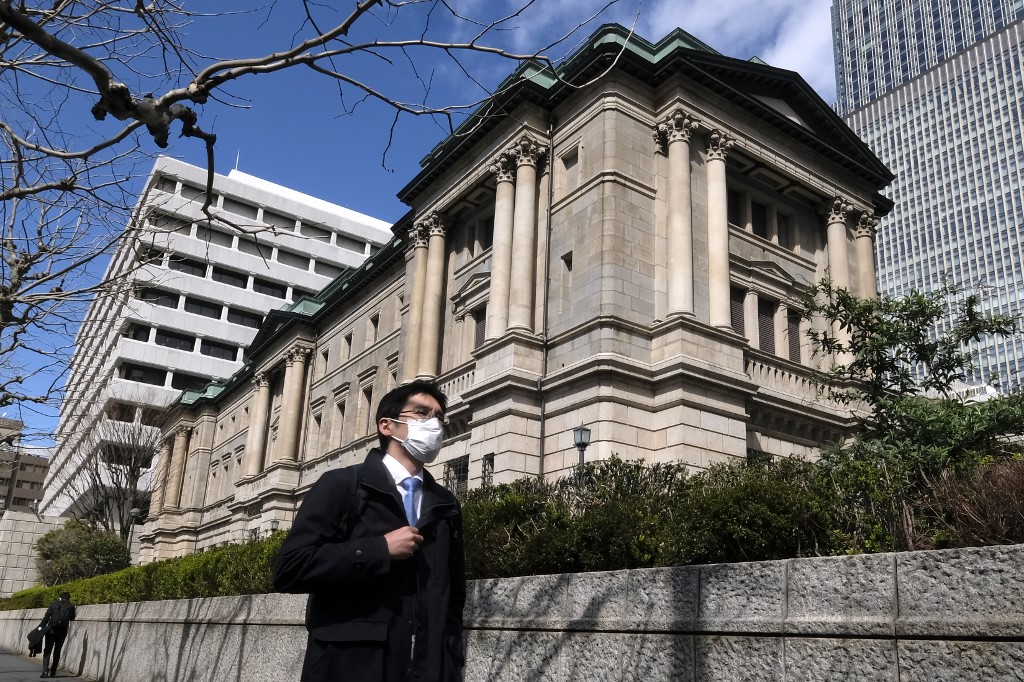By Ingo Mainert, CIO Multi Asset Europe at Allianz Global Investors
 The prospect of monetary policy tightening has moved onto the agenda again amid inflation at a level not seen for a long time. In the US, the Fed has begun reducing securities purchases – its so-called “tapering”. In some emerging markets, as well as in Norway, New Zealand and South Korea, key interest rates have already been raised. Meanwhile, the European Central Bank (ECB) is being coy and hesitant, but the markets do not really believe it will stand still for much longer.
The prospect of monetary policy tightening has moved onto the agenda again amid inflation at a level not seen for a long time. In the US, the Fed has begun reducing securities purchases – its so-called “tapering”. In some emerging markets, as well as in Norway, New Zealand and South Korea, key interest rates have already been raised. Meanwhile, the European Central Bank (ECB) is being coy and hesitant, but the markets do not really believe it will stand still for much longer.
Will monetary policy gradually become more “normal” again – that’s being balanced, with interest rate reactions upwards as well as downwards? Or is it more likely that, after tentative attempts to tighten, the first signs of displeasure from shareholders and stakeholders will lead central banks to reverse monetary policy again?
Unfortunately, the latter is to be feared. The predicted costs and braking effects of higher interest rates may be too much for them to bear. While, on the one hand, monetary tightening and the associated rise in real interest rates create the risk of an unintentionally severe economic slowdown; on the other, this could have a massive impact on the financial markets. In the financial markets, the long-standing central bank actions have seriously interfered with pricing mechanisms, overriding them in large parts of the bond market, leading to misallocations and overheating tendencies via the portfolio channel. The withdrawal of this “cheap money” therefore threatens turbulence. Last but not least, global debt, which is getting out of hand, would no longer be financeable “for free,” meaning that fiscal woes would dominate.
Not so long ago, central bankers would probably have said “so what?” in the face of such risks and acted within their focused mandate to maintain price stability. But in more recent times, the interest rate regime has changed. Sustained action is therefore less likely and the monetary watchdogs are unlikely to be prepared to face the consequences.
In a reversal of traditional behavioural patterns, the principle of reverse authoritativeness has now become established for the relationship between monetary policy and financial markets. Central banks increasingly respond to the signals and needs of the capital markets rather than the other way round. The result is an asymmetrical policy of rapid and significant interest rate cuts, but only very hesitant and small interest rate increases, if at all.
How could it have come to this? The seeds for this development were sown with the worldwide deregulation and liberalisation of the financial markets in the 1980s and 1990s. There is scientific evidence that this led to the birth and subsequent decoupling of the financial–market cycle from the business cycle. What is more, it is now clear that the financial-market cycle even dominates and lastsabout twice as long as the business cycle. Moreover, history teaches us deep recessions and sustained deflationary situations very often result from the bursting of asset bubbles.
To pinpoint when this change of heart started, theFed’s reaction to the 1987 stock market crash can be considered a turning point – a fall from grace. That was the first time that the central bank explicitly responded to falling stock prices. Wall Street later created a new term for this: the “Greenspan Put”.
However, financial dominance really took off after the global financial crisis of 2008. Since then, the reaction pattern has been perfected. In this context, the ECB adopted the PFFC regime – the “preserve favourable financing conditions” regime. Since the middle of this year, the ECB has regularly publisheda Survey of Monetary Analysts (SMA) in which it asks market participants for detailed information on when they expect the ECB to take which action. This feeds suspicions about who is the cook and who is the waiter these days!
Against this backdrop, and with a view to the earlier question whether monetary policy will return to “normal”, the central banks thus find themselves in adilemma. As things stand, no real departure from the aggressively relaxed approach that has been in place for years is to be expected. And this despite emerging asset bubbles and sentiment-related exaggerations in sub-markets. Think of the almost 70% weighting of US equities in the global index, real estate markets, cryptos, SPACs (Special Purpose Acquisition Companies) or meme phenomena.
For investors, this has three implications:
- First, more than ever, diversification is of the utmost importance for any forward-looking investment strategy.
- Second, the same applies to agile active portfolio management, which includes a dynamic risk strategy. Both the first and second requirements may seem old-fashioned to investors, but they remain imperative.
- Third, income strategies are advisable in view of the low interest–rate environment that is likely to persist for a long time to come. In equities, these can be implemented by focusing on dividends, for example.
Ultimately, these three implications are a reminder of traditional, conservative investment principles. However, monetary policy is currently upside down –financial dominance and the fight for, rather than against, inflation. And that’s also not to forget Modern Monetary Theory (MMT).
The consequence could be the loss of central banks‘ institutional independence, which would be deeply regrettable. In view of this move away from “normal” monetary policy, it seems a very suitable time to at least put one’s own capital investment on a solid footing.























